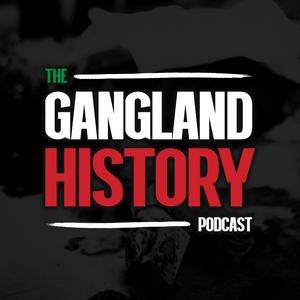#42: The State of the Mafia (1967): Part Three
In today's episode, we wrap up one of the most detailed and historically rich series we’ve ever done. In Part Three of our special deep dive into the FBI’s 1967 report on La Cosa Nostra, we close the book on an era where the mob’s influence was at its peak across the United States.This final installment takes us beyond New York’s Five Families and paints a broader picture of organized crime’s national footprint — from the power struggles within familiar crime families to lesser-known but highly active Mafia outposts across the country.Read the full FBI report for yourself: https://www.maryferrell.org/showDoc.html?docId=113324🧠 In This Episode, We Cover:✅ The Bonanno Crime Family’s descent into chaos, civil war, and betrayal — as Joe Bonanno returns to face down the Commission and fight to reclaim his throne.✅ The Gambino Family’s rise, as Carlo Gambino cements his control and grooms Paul Castellano behind the scenes — a critical step in Mafia succession history.✅ The Genovese Family’s murky leadership, with Vito Genovese in prison and shadow bosses like Philip “Benny Squint” Lombardo running the show unnoticed.✅ The Lucchese Family’s transitional moment following Tommy Lucchese’s death — and the jockeying between Carmine Tramunti and Tony “Ducks” Corallo to take control.✅ The Colombo Family’s quiet power, with key figures like Sonny Franzese and Carmine Persico taking shape as future legends.But that’s just the beginning.🗺️ We also dive into the overlooked regional strongholds that reveal just how deep and wide La Cosa Nostra’s reach really was:Buffalo, NY – Under Stefano Magaddino, this powerful family controlled Western New York and stretched its reach into Canada and several upstate cities.Albany / Utica / Syracuse, NY – Subordinate to Buffalo, these cities were managed by men like the Falcone brothers and Anthony DeStefano, with FBI confusion over whether Utica operated as its own borgata.Cleveland, OH – Led by John Scalish with key figures like Frank Milano and James Licavoli, the Cleveland family maintained quiet power and deep national connections.Baltimore, MD – Frank Corbi ran a small but respected Gambino-aligned crew while the Jewish mob held most of the city’s gambling rackets.Rockford, IL – Uniquely independent, the Rockford family under Joseph Zammuto resisted Chicago Outfit control and operated with its own leadership structure.Dallas, TX – Joe Civello led a low-profile family that may have answered to the Genovese Family rather than New Orleans, challenging traditional narratives.Denver, CO – Though unnamed in this report, the Smaldone brothers dominated organized crime in Colorado, running a tightly knit and durable operation.Boston & Providence – Raymond Patriarca controlled New England, but the FBI misread key leadership roles, as Gennaro Angiulo and Henry Tameleo held more power than noted.🎯Each of these regional snapshots is more than just a list of names — they offer a rare “moment-in-time” look at how the FBI viewed organized crime in 1967. Some of it is accurate, some speculative, and some flat-out wrong — but all of it is fascinating.The report lists:📋 Full leadership rosters for major New York City families: Gambino, Genovese, Lucchese, Colombo, Bonanno.🌍 Regional family structures in other cities: Buffalo, Cleveland, Chicago, Dallas, Rockford, Baltimore, Denver, and many more.⚖️ Acting titles, rival factions, and transitional leadership: Families undergoing internal strife (e.g., Bonanno and Chicago).In fact, we cover 30+ cities and over 200 individual mobsters across the United States, so get ready to dig in.🎬 Catch Up On Parts One & Two:Part One: https://youtu.be/p3YTUNRnDlwPart Two: https://youtu.be/hzz1F6E5c7A🔔 Support the show on Patreon:https://www.patreon.com/GanglandHistoryPodcast



